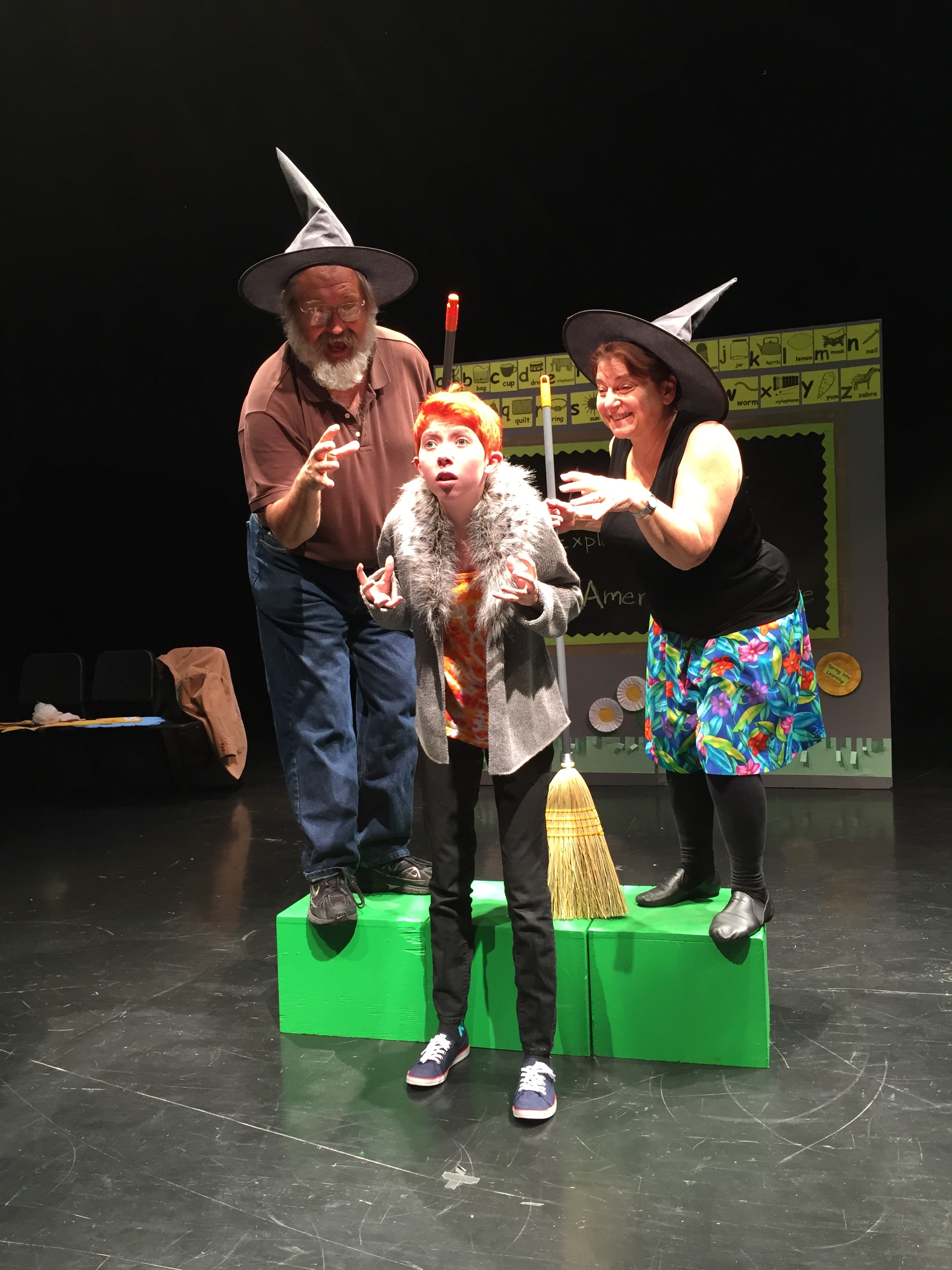Written by Craig Kosnik, PhD, instructor of Theater for Youth
This past spring twelve brave students and one instructor set out on a journey to create and adapt a brand new play for k-2 audiences - and all in one semester! Animal Tails was adapted from the folk tales of four different Native American cultures: Rainbow Crow (Lenni Lenape), How Rabbit Lost His Tail (Wabanaki), Coyote Stories (Cheyenne), and Rabbit Calls a Truce (Wabanaki). The instructor wrote the prologue, transitional scenes, and an epilogue to tie the four tales together. In these scenes, the PVCC students took on roles as second grade students who were preparing to act out the folk tales. After creating the script, the class had a few weeks to rehearse and then presented the production to over 1,000 people during school day performances and during the PVCC Festival of Tales.







W R I T I N G T H E S H O W
Theatre is all about telling stories—to record our history, to teach life lessons, and to entertain us. We started our developmental process by reading other theatre for youth plays to see how they were structured and to identify what aspects of them we might want to incorporate into our own work. Then the creative writing process began. From the start, this has been a collaborative effort. First, we read a group of stories from several Native American tribes and decided on four that we wanted to adapt. This was based on a number of factors, including: the theme of each story, their potential for drama and theatricality, the inclusion of a variety of tribes/nations, animal characters that would be familiar to Arizona children, ease of portrayal, and, of course, the fun factor.
The Paradise Valley students were divided into four groups, and each group produced a script adapted from one of the Native American stories. The group members worked together, contributed ideas, and formatted and proofread the scripts, which were then incorporated into a final script that included a prologue, an epilogue, and transitional sections written by the instructor. We decided that having the play take place in a second-grade classroom would make the audience feel at home.
In adapting these tales, we took into consideration the language level appropriate to the target audience (K-2) and simplified some of the language in the original tales. The characters in each tale remained the same in our script with an occasional addition of other characters to make the transitions smoother. The tales were woven together by moving the action in and out of the classroom setting and through several characters who reappear throughout the play. Finally, we added some contemporary references, just for fun and to allow the audience members to relate easier to the material at hand.
P L A Y S Y N O P S I S
Miss Watuchi’s 2nd grade class is a group of rambunctious children. They are easily distracted and easily entertained. However, today is a special day for Miss Watuchi’s class. Principal Garfield has come to tell Native American folktales to the class, and the students are going to act them out. Follow the kids on a wonderful journey as they learn folktales through trickery, transformation, and friendship.
A N I M A L T A I L S S T U D Y G U I D E
In addition to the Animal Tails script, students created a Study Guide for use by teachers and students. It contained information on the show itself, the tribes highlighted, audience etiquette tips, a list of resources, and pre and post show activities to use in the classroom to investigate what the children will see in the show. This study guide was wholly created by the students of Theatre For Youth after they examined study guides from professional children’s theatres from around the country. They weighed the pros and cons of each one, and as a class, decided what would be best and most useful to include in our own study guide. You can view the study guide here!